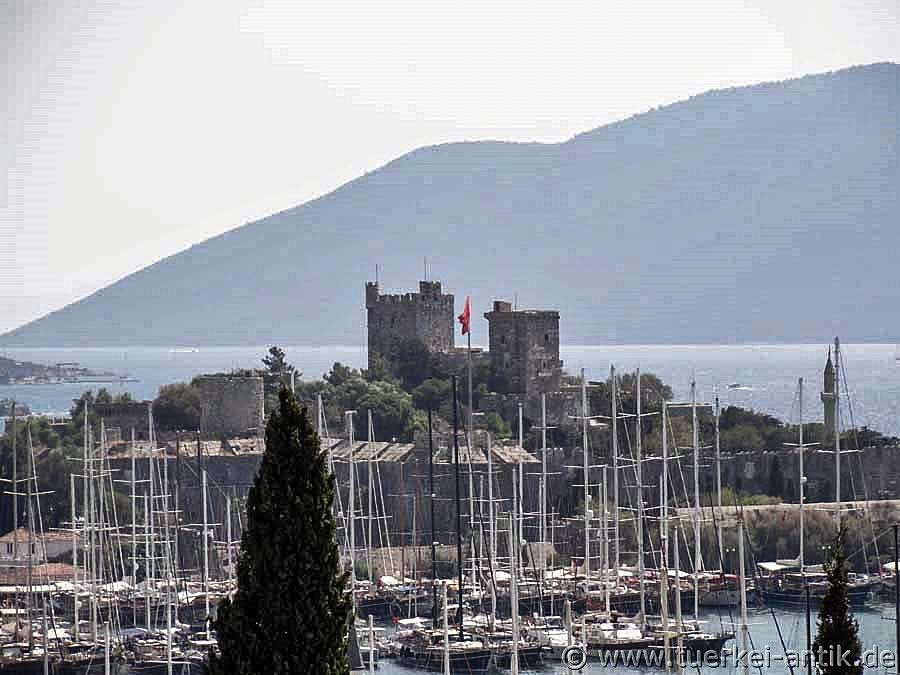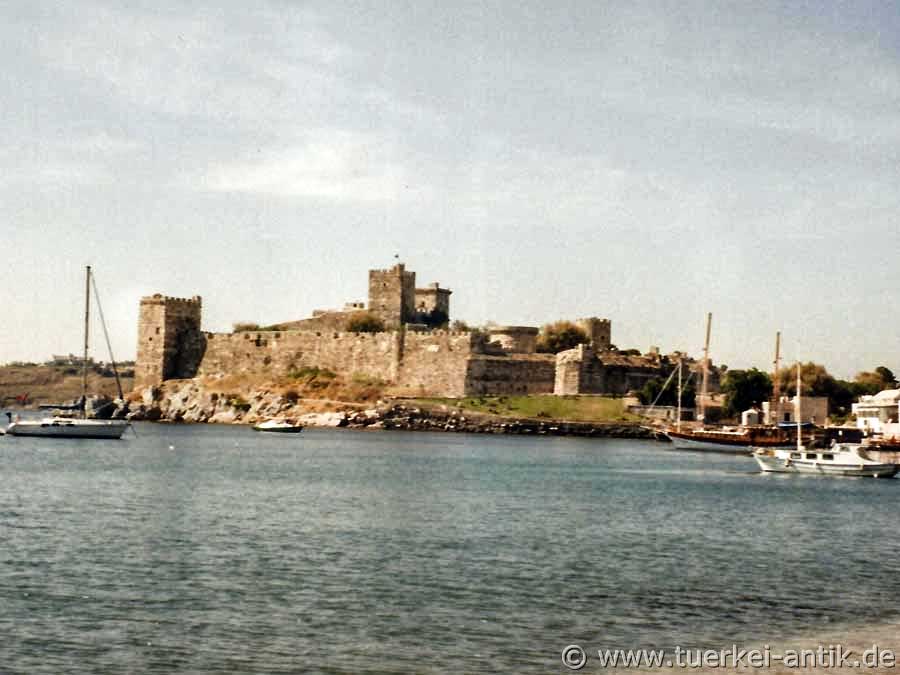 |
| Bodrum Kalesi (St. Peter) | |||
|
|
|
||
| St. Peter | |||
|
St. Peter's Castle was built by crusaders in 1420 and fell into the hands of the Ottomans without a fight in 1523 when the Johanniter abandoned Rhodes. |
|||
|
|
|||
|
The construction of St. Peter's Castle is closely connected with the destruction of one of the wonders of the ancient world, the Mausoleum of Halicarnassus. |
|||
|
|
|||
| The back of the castle St. Peter | |||
|
Already in the older parts of the castle, built in 1404, there are architectural and relief pieces made of marble and the typical grey-green ashlar stones that made up the core of the mausoleum. It is certain that the final act of the tragedy of the wonder of the world "Mausoleum of Halicarnassus" did not actually take place until 1523. The fortress commander de la Tourette, who was in charge of repairing the castle, reported that after the discovery of the actual burial chamber, a large room furnished with marble, the relief slabs were smashed and the building demolished. |
|||
| Photos: @chim | |||
| Translation aid: www.DeepL.com/Translator | |||
| Source: Wikipedia and others | |||
|
|
|||



